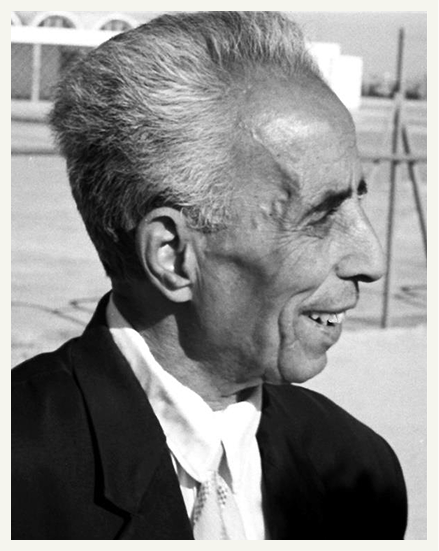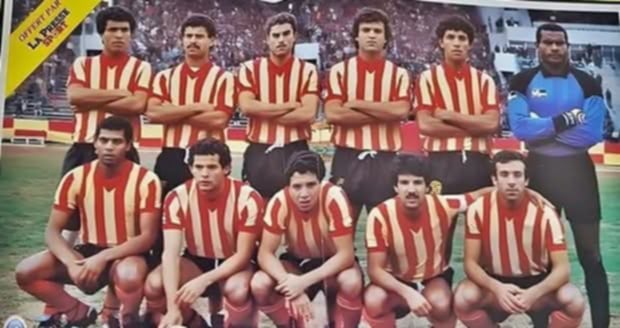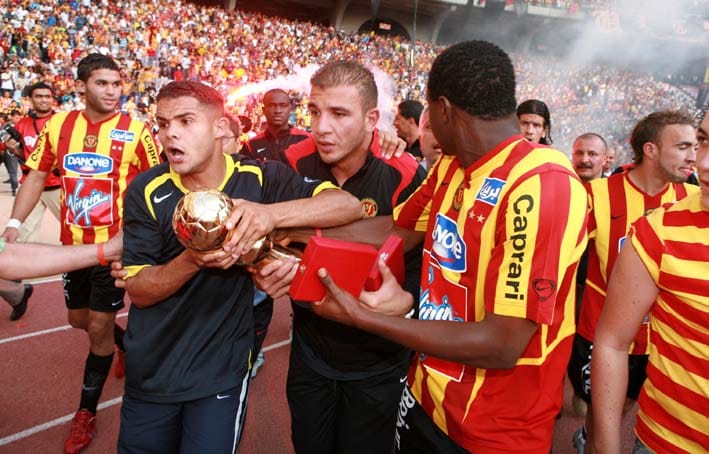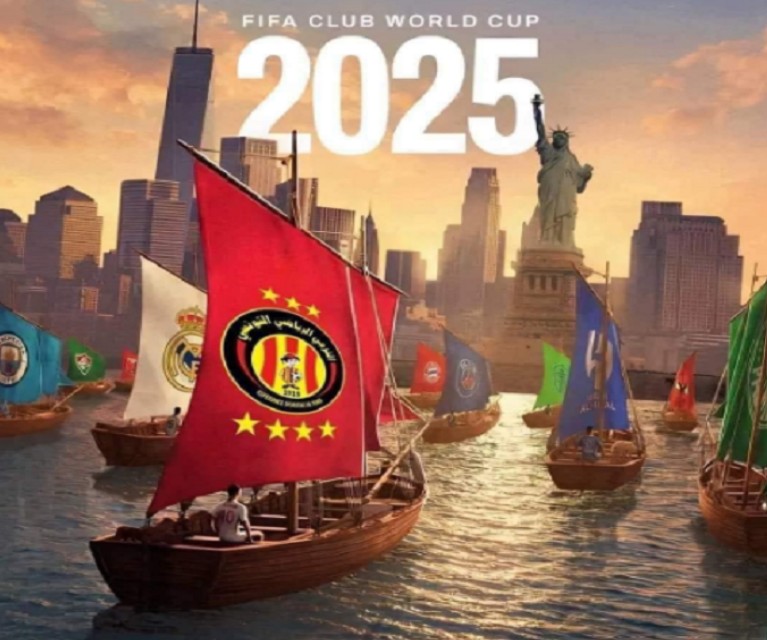The Birth of an Ideal
It all began in 1919, amidst the turmoil of colonial Tunisia. In Bab Souika, at a small café called “Esperance,” a few young patriots refused to bow to clubs dominated by colonial authority. Mohamed Zouaoui, a humble equipment keeper, dared to say no to a merger with a French club. Along with his companions Hédi Kallel, Taieb Badra, and others, they founded a Tunisian club—for Tunisians.
Esperance Sportive de Tunis was born. With no means, no pitch, and no official support… but with unshakable faith. In 1920, they played their first match. And so, the legend began.
This first decade was marked by a rise to the second division in 1928.

Mohamed Zouaoui,
Founder of Esperance Sportive de Tunis.

The First Trophies
The decade began with a major achievement, as Esperance was promoted to the first division in 1936 before claiming the Tunisian Cup in 1939 after defeating Étoile Sportive du Sahel in the final 4-1.
Despite a difficult political context, the team grew in structure and popularity. The red and yellow became more than a jersey: they became a flag of identity. Every match attracted more passion. Esperance began to instill fear… and inspire dreams.
Holding Steady Through Turmoil
The 1940s were marked by World War II and its aftermath. Competitions were irregular, resources were scarce, but Esperance endured. It was a decade of resilience and solidarity, where the club held its course despite the storm.
Despite the challenging context, Esperance laid the foundation for the DNA that would define it in the coming decades and won its first national championship in 1942. The Blood and Gold DNA was not limited to trophies; national identity remained firmly anchored in the "Mkachakh" spirit during an exceptionally difficult colonial period.
As proof, only Tunisian or Algerian players wore the Espérance jersey at that time.


The Club of a Rising Nation
As Tunisia edged closer to independence, Esperance transformed. The club became a symbol of national pride. Esperance won the Tunisian Cup in 1957 and secured two consecutive championships in 1959 and 1960 thanks to its legendary attacking line, composed of Abdelmajid Tlémsani—who scored 38 goals in a single season (a record never broken)—Mongi Hriga, and Abderahmen Ben Ezeddine.
This decade also saw the club become more structured and professional, asserting itself as a major force in Tunisian football. Esperance no longer represented just a neighborhood—it came to embody an entire people.
Growing, Structuring, Winning
The 1960s marked Esperance’s establishment as a powerhouse in Tunisian sports. The club delivered consistent performances and expanded into multiple sports. Volleyball, handball, basketball… the “Blood and Gold” house diversified and multiplied its successes.
The decade began with the passing of Esperance's iconic president, Chedly Zouiten, who led the blood-and-gold institution for 33 years—a record.
The club from Beb Souika won the Tunisian Cup in 1964 after defeating CSHL in the final with a score of 1-0.


National Dominance Confirmed
During this period, Esperance won three championships and one Tunisian football cup, while dominating Tunisian handball without contest.
The fervor of supporters grew, the club’s image shone, and Esperance became more than a sports club: it became a social phenomenon. The red and yellow passion transcended social classes, generations, and regions.
A Continental Ambition
In the 1980s, Esperance set its sights on Africa—both in football and in other sports like handball and volleyball. The club was no longer content with winning in Tunisia. It dreamed of continental glory.
While continuing its domestic dominance, its leaders and fans focused on the African stage. Esperance reached a continental final in 1987, becoming the first Tunisian club to achieve this feat.
Throughout the decade, Esperance won four championships and three Tunisian Cups, securing its first double in 1989 after defeating Club Africain in the Tunisian Cup final 2-0.


The African Coronation
In 1993, Esperance won its first international title, claiming the 1993 Arab Cup.
In 1994, the long wait ended: Esperance was crowned African champion in football. An unforgettable victory. The Afro-Asian Cup followed in 1995, along with the African Super Cup, won in Alexandria after a resounding 3-0 victory against Motema Pembe.
The late 90s were glorious: CAF Cup in 1997, Cup Winners’ Cup in 1998 .Esperance stood atop African football, writing its name in golden letters on the continental stage.
Esperance is now the first and only African club to have won all possible continental titles.
Unrivaled Local Dominance
The first decade of the new millennium was marked by national hegemony. Esperance accumulated Tunisian league titles, dominated local competitions, and developed a recognized playing style.
Though African campaigns remained inconsistent, the club kept investing, training, and believing. Each season brought renewed ambition. Locally, Esperance had nothing left to prove—it now sought to reign across Africa.


The Modern Dynasty
This was a decade of glory. In 2011, Esperance secured its fifth national double and, even more impressively, joined the elite club of teams that have won the treble—Cup, Championship, and Continental title. It made history again with two consecutive CAF Champions League titles in 2018 and 2019. A rare achievement that secured the club’s place in the pantheon of African football.
Simultaneously, the club participated in three FIFA Club World Cups. The name Esperance now echoed in stadiums across the globe. It became a flagship of Tunisian football and a model of organization. In handball and volleyball, it continued to dominate the African and Arab scenes.
A New Chapter, New Frontiers
Esperance continues its local dominance with multiple league and cup titles. But this decade is also one of innovation: infrastructure development, modernized administration, and a digital transformation of the fan experience.
It will take part in the upcoming FIFA Club World Cup in the United States—a historic journey that shows that even after more than a century, the club continues to evolve, to dream, and to rise.
Meanwhile, its handball and volleyball teams continue to shake up the African hierarchy.



